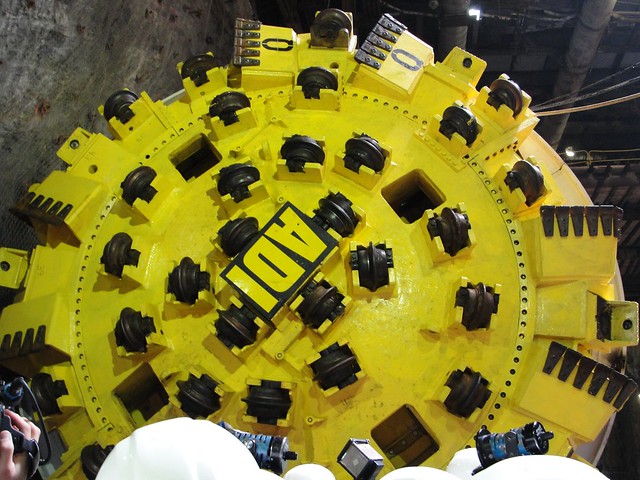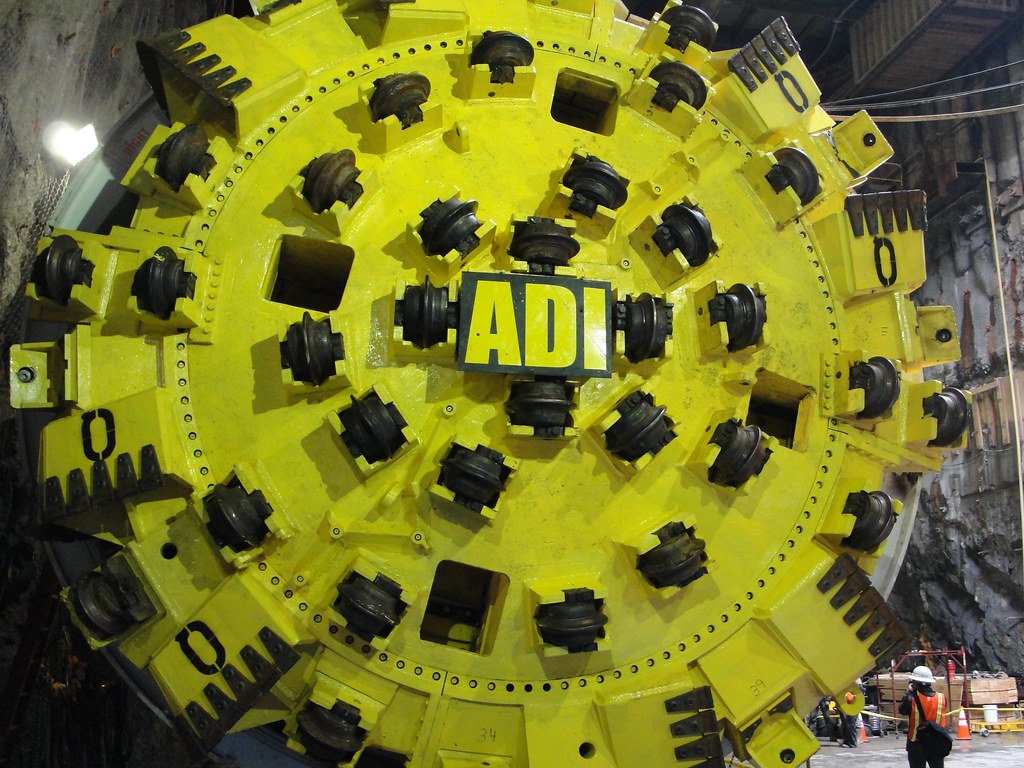 Progress along Second Ave. has increased by leaps and bounds this year as the MTA switched on the new subway’s tunnel boring machine and finally started digging out the tubes. Yet, as far as project management has gone, the Upper East Side’s politicians see only incremental improvement. After handing out a B- last year, Rep. Carolyn Maloney, Assemblyman Micah Kellner, and Councilwoman Jessica Lappin have given the Second Ave. Subway a B in their second annual report card.
Progress along Second Ave. has increased by leaps and bounds this year as the MTA switched on the new subway’s tunnel boring machine and finally started digging out the tubes. Yet, as far as project management has gone, the Upper East Side’s politicians see only incremental improvement. After handing out a B- last year, Rep. Carolyn Maloney, Assemblyman Micah Kellner, and Councilwoman Jessica Lappin have given the Second Ave. Subway a B in their second annual report card.
“Real progress has been made on the Second Avenue Subway this year – with the subway’s tunnel boring machine literally moving closer to the finish line with each passing hour,” Maloney said on Saturday. “This is a great project and it’s been a vital source of good-paying jobs in the worst economic environment we’ve seen since the Great Depression. But today, we’re serving notice that we’re keeping an eye on the MTA, and we’re going to keep pushing to make sure this project keeps moving forward, with no further delays. The MTA must complete the Second Avenue Subway by its current 2016 deadline. We cannot afford to have it take any longer.”
Maloney’s report both praises and criticizes the MTA. As she has in the past, the House representative highlights the economic impact of the jobs the Second Ave. subway construction has brought to New York City. “The project is employing thousands of workers at a time when the construction industry is experiencing a sharp downturn, making the Second Avenue Subway an ideal stimulus project,” the report says. “In fact, SAS qualified for funding under the American Recovery and Reinvestment Act of 2009 and received $78,870,000.”
Of concern to Maloney are the various completion dates. As I reported back in July of 2009, the Federal Transportation Authority fears that the Second Ave. Subway will wrap in 2018 and cost $5.7 billion while the MTA’s official documents still predict revenue service in late 2016. “The construction is taking a toll on local businesses and residents,” Councilman Dan Garodnick said, “and the longer it lasts, the greater that impact will be — which is why this project must be completed without any further delay.”
Despite the FTA’s initial concerns, the report card itself notes that the MTA has ironed out some early kinks in the process. Even though the FTA’s assessment hovers over the project, there have not, the report said, “been significant changes in cost or timetable since then.”
In the end, Maloney’s biggest fears remain focused around the project’s funding and its future as New York state’s economy enters uncertain times and the threat of a new governor looms. “Finally, while the federal government has already contributed $752.2 of its $1.3 billion commitment (with another $197 million expected for FY2011, which would bring the federal total to roughly $950 million), and the State has allocated more than $1.5 billion to the project, there is still some concern about the State’s ability to provide the funding during this time of fiscal crisis,” the report says. “It is encouraging to know that the current MTA Chair appears to be committed to completing the capital projects that are currently underway, but there will be a change in the Governor’s office in January, introducing an element of uncertainty.”
After the jump, I’ve posted the report card in its 3000-word entirety. As you’ll see, community relations and overall planning remain a concern of the politicians, and the authority loses significant points for its inability to keep the project on time and on budget.


 As the Second Ave. Subway chugs ahead late and over budget, the MTA Inspector General says that work slower and more expensive than anticipated on the utilities underneath the avenue is to blame for the project’s rising costs, The New York Times reported this morning. In a letter to Manhattan borough president Scott Stringer, MTAIG Barry Kluger said that the utilities relocation work has taken six months longer than expected and will cost $130 million higher than initial estimates.
As the Second Ave. Subway chugs ahead late and over budget, the MTA Inspector General says that work slower and more expensive than anticipated on the utilities underneath the avenue is to blame for the project’s rising costs, The New York Times reported this morning. In a letter to Manhattan borough president Scott Stringer, MTAIG Barry Kluger said that the utilities relocation work has taken six months longer than expected and will cost $130 million higher than initial estimates. 

 When Phase 1 of the Second Ave. Subway opens in
When Phase 1 of the Second Ave. Subway opens in 


